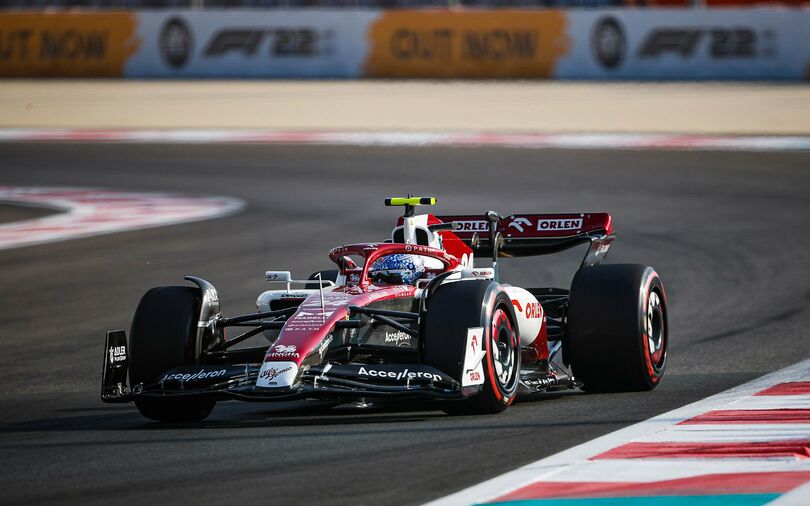
Thanks to the relatively high degradation seen over the first two days of the Abu Dhabi Grand Prix weekend, Formula One’s sole tyre supplier Pirelli thinks that the two-stop strategy might turn out to be the best way to complete the season-closing race. F1Technical’s Balázs Szabó analyses the possible strategies for today’s 58-lap race at the Yas Marina circuit.
Pirelli has nominated the three softest compounds in the range for the Abu Dhabi Grand Prix: C3 as the P Zero White hard, C4 as the P Zero Yellow medium and C5 as the P Zero Red soft.
A one-stopper has been the recipe for a successful, properly working strategy over the last years at Abu Dhabi, but this weekend seems to break with this tradition. The increased tyre degradation compared to last year’s race has created question marks surrounding pre-event simulations.
Pirelli’s chief engineer Simone Berra said: „The tyre with the highest wear rate at Yas Marina is the front right, due to the anti-clockwise layout and circuit characteristics. The front axle was the most limiting factor in terms of degradation; to manage the graining encountered today (Friday) on the softer compounds, the teams could decide to use a combination of C3 (hard) and C4 (medium) compounds on Sunday.”
And these are the possible strategies. Which one do you think the #Fit4F1 drivers will go with for the #AbuDhabiGP? 🔮#F1 #Formula1 #Pirelli #Pirelli150 @F1 pic.twitter.com/PeE34Hs9dQ
— Pirelli Motorsport (@pirellisport) November 20, 2022
Pirelli estimates that the two-stop strategy will prove to be the fastest option for the Abu Dhabi Grand Prix. Based on the long runs completed on Friday, the two-stop strategy, with an average loss of 22 seconds for each tyre change, is projected to be four to five seconds faster than the single-stop strategy.
Two options are considered the fastest: start on mediums, change to hards (between lap 16 and 22) complete the final stint on either the medium or hard compound. Completing the final stint on soft tyres is less likely, as it is unlikely to be as competitive as the other compounds.
The final decision of the strategy will not only depend on the tyre wear and the traffic situation, but also on the drivers’ remaining tyre allocation.
The Milan-based tyre supplier thinks that the best way to execute a one-stop strategy may involve an opening stint on the medium compound and then replace it with the hard tyre, with managing the degradation of a longer first stint key. Other options on a one-stop strategy include soft to hard and hard to soft, at which point a safety car would play an important role in the outcome.
What race sets do the drivers have available to them for the @F1 finale? Look no further…#F1 #AbuDhabiGP #Fit4F1 #Formula1 #Pirelli #Pirelli150 pic.twitter.com/eHjoaAMonc
— Pirelli Motorsport (@pirellisport) November 20, 2022

